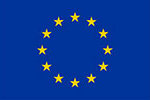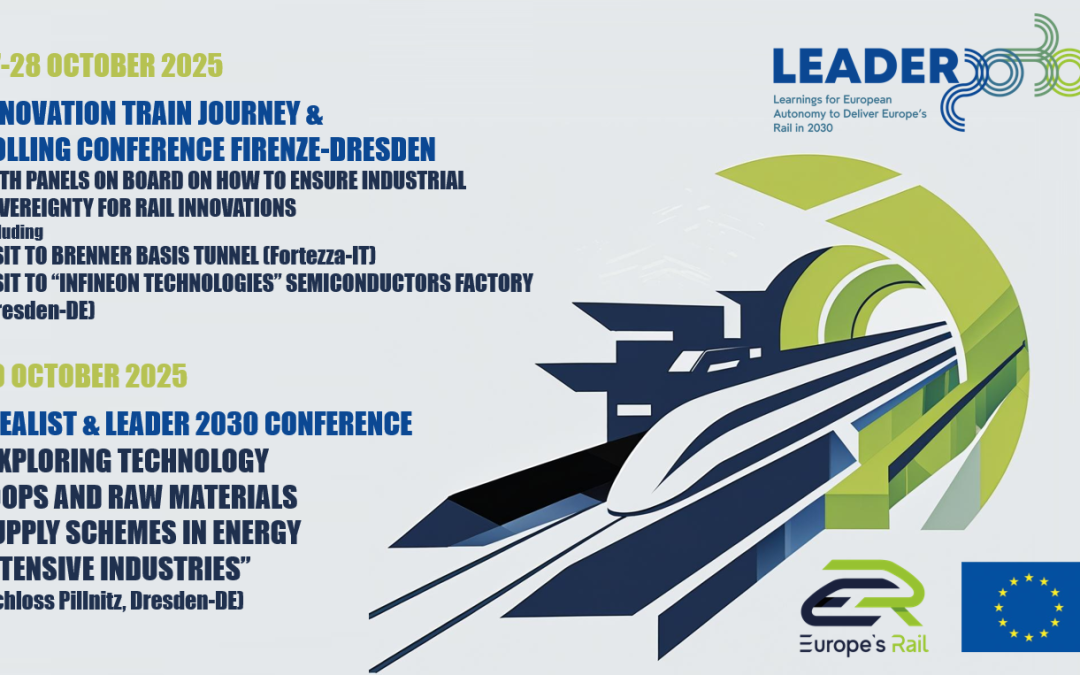How can we build on the progress made so far to make rail travel truly accessible, affordable and reliable for...
FP6-FUTURE:
D3.1: Use cases and scenarios for ATO in different GoA demos for G1 regional lines.
D3.1 summarises the use cases and scenarios for Automatic Train Operation (ATO) in different Grade of Automation (GoA) demos for regional lines on the interoperable European network. It covers the introduction of ATO systems from GoA2 to GoA4, using the European Rail Traffic Management System/European Train Control System (ERTMS/ETCS) as a platform for automating train operations on low-traffic and moderate-speed regional lines. The report identifies use cases and technical requirements ATO must meet to enhance performance and economic sustainability while maintaining interoperability. The solutions explored are grounded in existing specifications and include a detailed list of use cases, demonstrator set-ups, and fallback systems such as remote operation. This work provides the foundation for the demonstration campaigns planned during the second half of the FP6 project.
How it brings us closer to achieving better rail for Europe: The use cases and scenarios for ATO in different GoA demos for regional lines contribute to achieving better rail in Europe by enabling the automation of train operations on lines with low-traffic and moderate speeds. The use of ERTMS/ETCS ensures interoperability with main lines, supporting integration within the Single European Railway Area. Additionally, the solutions promote a greener, more digital, safe and more cost-efficient development of regional rail, addressing challenges such as reliability, availability, and Total Cost of Ownership.
Target audience: Rail stakeholders, Railway Undertakings, Railway Industry Professionals.
More information on this topic: FLAGSHIP PROJECT 6: FUTURE
D6.6: Specification of passenger congestion monitoring.
This document provides a comprehensive specification for a passenger congestion monitoring system aimed at revitalising regional railway networks across Europe. It defines use cases, system requirements, components and exchange scenarios to guide the system’s development and implementation. The use cases illustrate scenarios related to passenger congestion and serve as the foundation for system functionalities, such as delay prediction, timetable synchronisation analyses and train platforming optimisation. Both functional and non-functional requirements are addressed to ensure the system’s effectiveness and reliability. Exchange scenarios depict interactions and data flows under different operational conditions. Algorithm descriptions leverage advanced data analytics and machine learning techniques to manage congestion and improve overall quality of service. This framework supports future development and demonstration phases and contributes to enhancing operational capabilities in regional rail.
How it brings us closer to achieving better rail for Europe: The specification of passenger congestion monitoring system contributes to improving regional rail by addressing the unique challenges of these networks and enhancing their operational capabilities. By defining use cases, system requirements, and data exchange scenarios, it lays the foundation for practical, modular and reliable solutions. These insights support informed decision-making and a higher quality of service. The framework also guides the development and demonstration of innovative solutions, aligning with the broader mission of revitalising regional railway networks across Europe.
Target audience: Rail stakeholders, Railway Undertakings, Railway Industry Professionals.
More information on this topic: FLAGSHIP PROJECT 6: FUTURE
FP2-R2DATO
D37.3: Requirements specification to FA1 WP8/9.
This report focuses on the strategies for the rapid deployment of the European Rail Traffic Management System/European Train Control System (ERTMS/ETCS) Hybrid Level 3 (HL3), also known as Hybrid Train Detection (HTD). The aim is to accelerate the adoption of these technologies while minimising the need for major infrastructure investments. This document outlines the requirements for capacity simulation studies, detailing the methods and performance indicators relevant to the scenarios. It also describes the simulation environments and presents all scenarios to be simulated in FP1-MOTIONAL across five European countries. These scenarios combine different infrastructure elements (train detection and virtual subsections) and traffic conditions (train types and train integrity monitoring). The goal is to develop a more resilient and efficient railway system by carefully evaluating and optimising each configuration before real-world implementation.
How it brings us closer to achieving better rail for Europe: Passenger traffic in Europe has increased significantly in recent decades, putting growing pressure on existing railway systems. To meet future demands, new digital and automated solutions are being developed to build a high-capacity and fully integrated European railway network. These innovations aim to remove barriers between systems, promote full integration and speed up the adoption of new technologies. ETCS HL3 Deployment Strategies are key components of Hybrid Level 3 (HL3), also known as Hybrid Train Detection (HTD). Their main objective is to align and integrate the HL3/HTD approach into the future Functional Railway System Architecture defined by the System Pillar and to apply the defined principles across different railway systems.
Target audience: Rail stakeholders.
More information on this topic: FLAGSHIP PROJECT 2: R2DATO
FP5-TRANS4M-R
D5.5: Requirement Specification Yard Automation
This document defines the requirements for yard automation to support Full Digital Freight Train Operation (FDFTO) and to enable competitive digital rail freight services. The focus is on leveraging the Digital Automated Coupler (DAC) and its enabler functions for Automated Shunting Operation (ASO), particularly in yard environments. Two core use cases -hump shunting and flat shunting- are described in detail, each with specific operational approaches and automation goals. Key enablers for yard automation include Fully Automated Decoupling and Automated Shunting Movements, supported by stationary brake tests and parking brake functions. A modular approach allows for the stepwise implementation of these technical enablers and supports the DAC migration process. This document outlines the requirements, use cases and interfaces to be aligned with broader rail systems and future demonstrators.
How it brings us closer to achieving better rail for Europe: The Requirement Specification Yard Automation contributes to achieving better rail for Europe by enabling a transition toward safer and more efficient freight operations, particularly through automated shunting movements. The goal of eliminating the need for staff between tracks in hump yards and achieving single-staffed operations in flat yards reflects targeted improvements in safety and optimum automation. The use of enabler functions –such as fully automated decoupling and stationary brake tests- lays the groundwork for future digital workflows. By aligning interfaces and protocols relevant for shunting, these advancements support DAC migration and ensure integration with other systems including video-gates, localisation devices, Traffic Management System and Automatic Train Operation.
Target audience: Rail stakeholders.
More information on this topic: FLAGSHIP PROJECT 5: TRANS4M-R
ESEP4Freight
D2.2: Analysis of the current legal and contractual framework and upgrade recommendations
The ESEP4Freight project aims to develop a web platform that provides freight customers with visibility and access to rail freight options across Europe. The platform will offer various modules, including an interactive map, a schedule viewer, a contract toolbox, a matchmaking tool and a CO₂ calculator. This deliverable presents the results of an analysis of the legal and contractual arrangements between the various actors involved in door-to-door intermodal freight environment. It also compares primary and secondary legislation at European and national levels. Additionally, this document includes an ‘inventory’ of legal conventions across different transport modes and assesses their impact on transport liability, responsibility and flexibility. The report concludes with recommendations for improving the contractual framework of intermodal freight transport. These recommendations will be integrated into the web platform and further validated through the project’s development phases.
How it brings us closer to achieving better rail for Europe: The ESEP4Freight project is expected to support the shift towards rail transport, ultimately contributing to the decarbonisation of transport.
Target audience: Freight Rail stakeholders, Member States, Policy Makers, Logistic stakeholders.
More information on this topic: ESEP4Freight Project
















